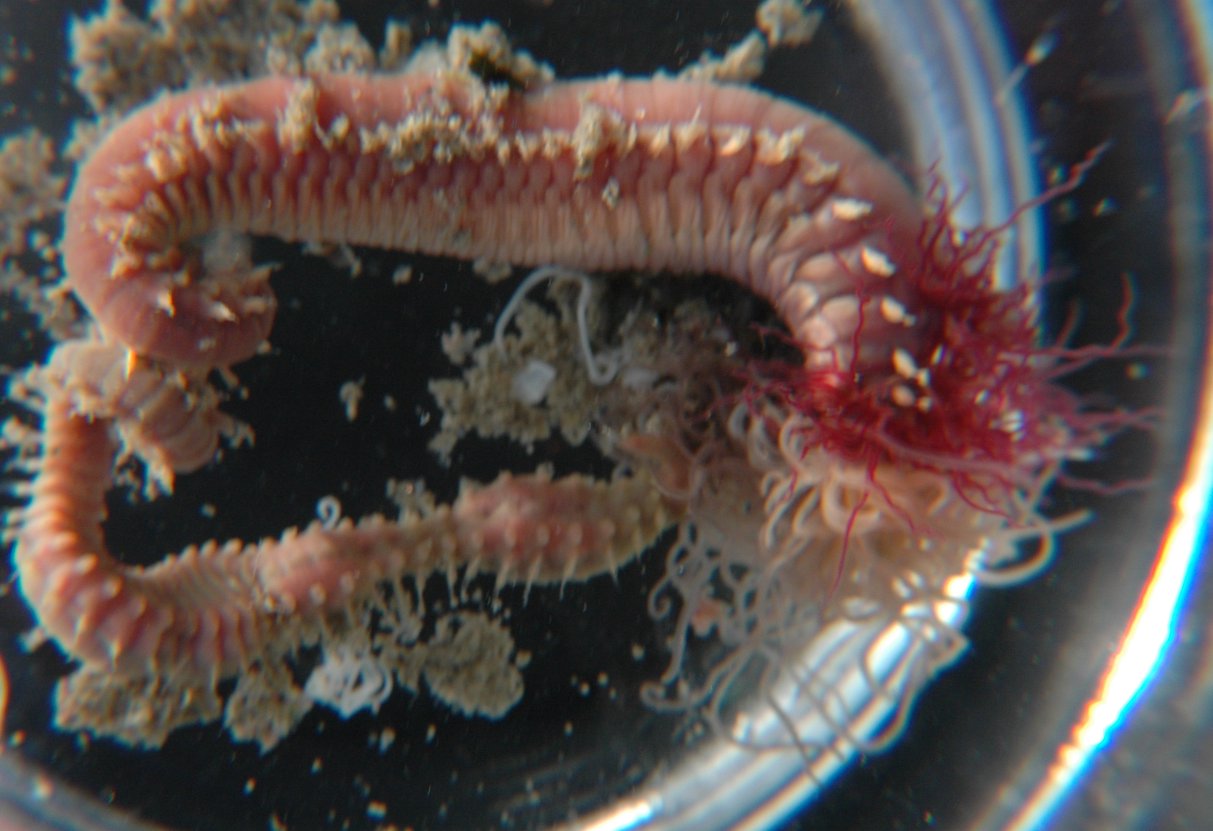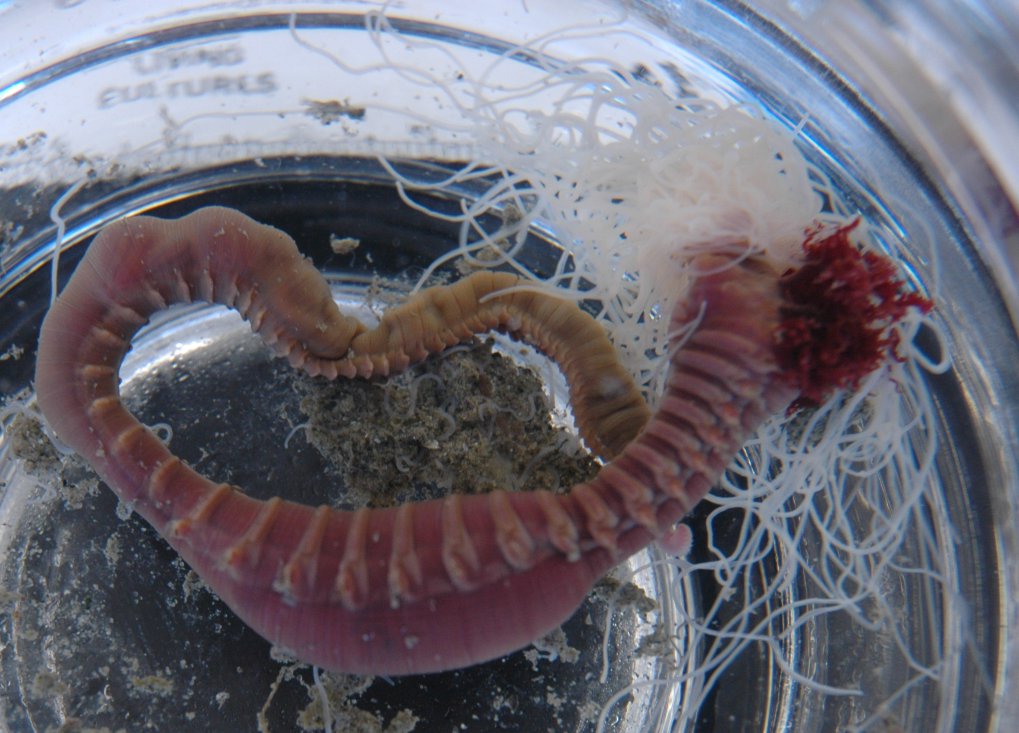Thelepus crispus Johnson, 1901Common name(s): Spaghetti worm, Shell binder worm, Curly terebellid, Hairy gilled worm |
|
| Synonyms: Thelepus plagiostoma |  |
| Phylum Annelida
Class Polychaeta Order Terebellida Family Terebellidae |
|
| Thelepus crispus from sandy mud mixed with rocks, Guemes Channel. Length about 15 cm | |
| (Photo by: Dave Cowles August 2005) | |
How to Distinguish from Similar Species: Other terebellids do not have three pairs of unbranched gills or, if they do, the rows of uncini are not curved to form an ellipse. Amphitrite cirrata is another spaghetti worms but it builds a membranous tube that is not encrusted with sand and shells, and has two interlocking, zipperlike rows of neurosetae.
Geographical Range: Alaska to S. California; India
Depth Range: Middle to low intertidal
Habitat: In sandy mud among stones. Most common terebellid in the rocky intertidal, where it attaches its shell and sand-encrusted membranous tube to the underside of rocks, or between rocks.
Biology/Natural History: Terebellids build thin, membranous, sand-encrusted tubes in soft mud and sand. They extend their feeding tentacles from the entrance of the tube like spaghetti over the surface of the nearby sediment. The tentacles are extended out from the burrow by ciliary creeping and they can be retraced by muscular action. Mucus and ciliary action on the feeding tentacles transports small organic particles from the sediment to the mouth, especially along a groove along one side. Mucus and ciliary action on the feeding tentacles transports small organic particles from the sediment to the mouth. The tube of Thelepus crispus is usually made of fragments of shell, stone, and other detritus, is nearly 1 cm wide, and is cemented to the undersurface of or between rocks. It may leave its tube when disturbed and later build a new one. They circulate water through their burrows. The major phosphagen in these worms is phosphoarginine; phosphotaurocyamine is also present. Commensals include the polychaete scaleworms Halosydna brevisetosa and Hololepidella tuta.
There are several genera of terebellids that are difficult to tell apart in the field. The feeding tentacles of Thelepus has threadlike, unbranched tentacles, and gills of similar length. Neoamphitrite and Terebella have dark, branching tentacles, which are longer than the gills which are white. Neoamphitrite has 17 thoracic segments while Terebella has 23 to 28.
Members of Family
Terebellidae
have special pumping vessels at the base of the gills to actively pump
blood through them.
| Return to: | |||
| Main Page | Alphabetic Index | Systematic Index | Glossary |
References:
Dichotomous Keys:Flora and Fairbanks, 1966
Kozloff 1987, 1996
Smith and Carlton, 1975
General References:
Kozloff,
1993
Lamb
and Hanby, 2005
Morris
et al., 1980
Niesen,
1997
O'Clair
and O'Clair, 1998
Ricketts
et al., 1985
Scientific
Articles:
Web sites:
General Notes and Observations: Locations, abundances, unusual behaviors:

Another view of the same individual. The light-colored, soft
pads on the ventral surface of the thoracic segments are clearly
visible
on the upper side of the lower (anterior) loop. The uncini
can be seen as projections from the parapodia. The extensible
feeding
tentacles are white and the gills, through which blood can be seen
circulating,
are red.
Authors and Editors of Page:
Dave Cowles (2005): Created original page